| Gurucharan and Mansimran Singh
Pioneer Indian studio potters
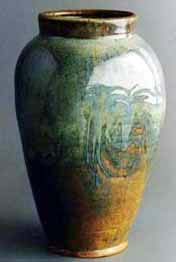 Gurcharan
Singh (1898-1995) graduated from the Prince of Wales College
in Jammu (now Pakistan) with a Bachelor's degree in geology and
chemistry in 1918. After accepting a job at a brick factory run
by his father’s friend Ram Singh Kabuli, he became an apprentice
with Abdullah Musalmaan, a descendant of a famous line of Pathan
potters who came to India in the thirteenth century. In 1919 Singh
went to Japan to study industrial ceramics. There, he met Yanagi
Soetsu, Bernard Leach, Tomimoto Kenkichi and Shoji Hamada. Gurcharan
Singh (1898-1995) graduated from the Prince of Wales College
in Jammu (now Pakistan) with a Bachelor's degree in geology and
chemistry in 1918. After accepting a job at a brick factory run
by his father’s friend Ram Singh Kabuli, he became an apprentice
with Abdullah Musalmaan, a descendant of a famous line of Pathan
potters who came to India in the thirteenth century. In 1919 Singh
went to Japan to study industrial ceramics. There, he met Yanagi
Soetsu, Bernard Leach, Tomimoto Kenkichi and Shoji Hamada.
On his return to India, he established a workshop at his old pottery,
which became known for its Persian copper-blue tiles. In 1927 he
founded the All India Fine Arts and Crafts Society (AIFACS). He
was head of the Government Pottery Institute at Ambala in Jammu
from the late 1930s until 1952. Singh then returned to his old pottery
works, renaming it the Delhi Blue Art Pottery (now the Delhi Blue
Pottery Trust). Delhi Blue tiles were used in many public buildings
in India. In 1974 Gurucharan Singh was awarded the Sahitya Kala
Parishad's best artist award and in 1991 he received the Padmashree
from the President of India for his contribution to the field of
ceramics. He is also known as the author of Pottery in India,
published in 1979.
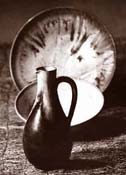 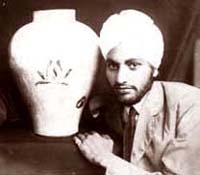
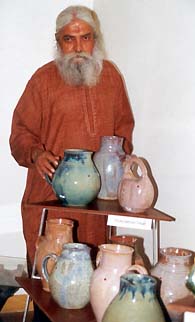 Mansimran
Singh studied pottery with his father Gurcharan at the Delhi
Blue Art Pottery from 1956-1959. He also studied with Bernard Leach
and Geoffrey Whiting. In 1960 he joined his father at his pottery.
In 1976 Mansimran Singh assisted in establishing the Lalit
Kala Akademi's (National Academy of Art) pottery studios
in Delhi. Later he held workshops for the academy in Lucknow. Mansimran
Singh studied pottery with his father Gurcharan at the Delhi
Blue Art Pottery from 1956-1959. He also studied with Bernard Leach
and Geoffrey Whiting. In 1960 he joined his father at his pottery.
In 1976 Mansimran Singh assisted in establishing the Lalit
Kala Akademi's (National Academy of Art) pottery studios
in Delhi. Later he held workshops for the academy in Lucknow.
In 1984 he and his wife Mary, also a potter, moved to Andretta,
Himachal Pradesh, where they make functional, glazed earthenware
and conduct three-month long training courses.
 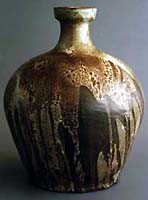
More Artists of the Week
More Articles
|